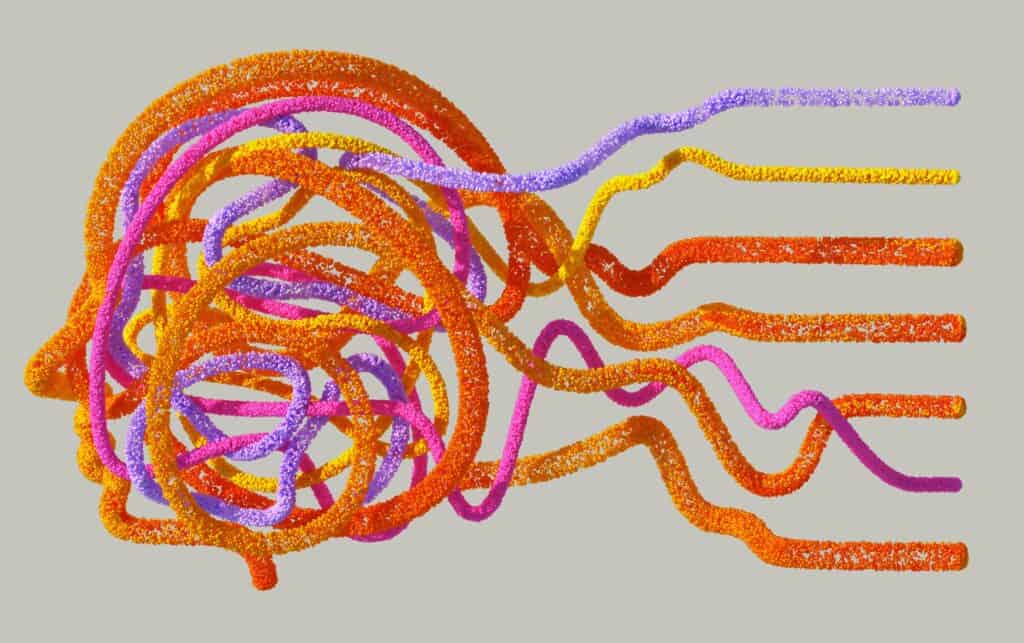The digital world is abuzz with two letters: AI. Artificial Intelligence has exploded from a niche concept discussed by futurists into a tangible, everyday reality. It’s in our phones, our homes, and increasingly, in the tools we use to build our businesses. From AI-powered chatbots promising 24/7 customer service to platforms that can generate marketing copy in seconds, the message seems clear: AI is here to make everything faster, wiser, and more efficient.
This rapid evolution presents a critical question for any business looking to create or enhance its digital presence: where should you invest your resources? Do you lean into the automated power of AI, or do you stick with the proven expertise of human professionals? Is a website designed by an algorithm just as effective as one crafted by a skilled web design agency? As a Surrey web design agency with years of experience, we’re here to shine a light on this question and highlight where we think AI’s capabilities currently excel.

The debate is often framed as a battle – AI versus the human touch, machine versus creator. But the reality is far more nuanced. It’s not about one being inherently ‘good’ and the other ‘bad’. Instead, we should seek the unique strengths of each and how they can work together.
This article will explore where AI slots in as a powerful new tool, where the human touch remains irreplaceable, and how a modern agency like Full Stack Industries navigates this new landscape to build digital experiences that aren’t just functional but truly exceptional.
Where AI Excels: Speed, Data, and Efficiency
Where credit is due, credit is given: AI is a game-changer for productivity and efficiency in the digital space. It has completely changed the way people work in an incredibly short amount of time. The large language model (LLM), ChatGPT, first went live in 2022, and ever since, it’s all people could talk about.
When we talk about AI in web design, we’re referring to a range of tools – from intelligent assistants in website builders and AI logo generators to complex algorithms that analyse user behaviour. When used correctly, these tools are invaluable.
Here are some key areas where AI offers a distinct advantage:
Incredible Speed and Productivity
A significant benefit of AI is its speed. Across a range of disciplines, AI tools can generate inspirations, drafts, ideas, and solutions in minutes. This ability to rapidly prototype is invaluable. It allows designers and clients to visualise different paths quickly, accelerating the initial stages of a project and turning abstract ideas into tangible mockups almost instantly.
Deep Data Analysis and Personalisation
Modern websites generate a treasure trove of data on user behaviour. Which buttons do people click? Where do they stop scrolling? Which paths lead to a sale? While informative, manually sifting through this data is a monumental task.
AI algorithms can process millions of data points in the blink of an eye. They can identify subtle patterns, predict user behaviour, and suggest data-driven improvements for A/B testing. This can also power real-time personalisation, where a website’s content dynamically changes to suit an individual user’s interests, much like how streaming services recommend shows you might like.
Automating Repetitive and Tedious Tasks
Web development involves many time-consuming, repetitive tasks. Tasks such as optimising hundreds of images for fast loading times, conducting keyword research for SEO, meticulously checking for broken links, or writing basic code snippets can consume a developer’s entire day. AI can automate these processes, freeing up skilled professionals to focus their brainpower on solving more complex, creative, and strategic problems that deliver real value to the business.
Enhancing Accessibility and Consistency
A great website should be usable by everyone, including people with accessibility needs. AI tools can automatically scan a website and flag common accessibility issues, such as poor colour contrast or missing image descriptions, that might otherwise be missed. Similarly, AI can enforce brand consistency by ensuring that fonts, colours, and spacing are uniform across every single page – a level of precision that is tedious to achieve manually.
In these areas, AI is transformative. It takes on the heavy lifting, the number crunching, and the repetitive checks, allowing projects to move faster and be built on a foundation of solid data.
The Enduring Power of the Human Touch

While AI handles the ‘how’ with remarkable efficiency, it often struggles with the ‘why’. A digital experience is more than a collection of data-optimised elements and efficiently coded functions. It’s an emotional and psychological journey, which is where the human touch is not just superior, but essential. So, what can a human bring to the table that an algorithm can’t?
True Creativity and Ground-breaking Innovation
AI is, by its very nature, derivative. It learns from the vast dataset of existing websites, designs, and content it has been trained on. It can cleverly combine these elements and generate something that looks new, but it often struggles to create something truly original.
Genuine innovation – the kind that disrupts an industry, creates a new aesthetic, or captures the public’s imagination – is born from human experience, cultural awareness, emotion, and flashes of inspiration. A human designer can break the rules because they understand them. An AI’s best position in this situation is riding in the passenger seat: supporting, but not leading creative campaigns.
Empathy and Genuine User Understanding
A human designer can sit down with a target user, listen to their frustrations, observe their non-verbal cues, and understand their motivations on a profoundly personal level. This empathy is the key to designing an experience that doesn’t just work, but feels good to use. An AI can analyse click data, but it doesn’t understand the frustration of a user who can’t find the information they need so well. It can’t feel the delight of an interface that is intuitive and elegant. Empathy bridges the gap between a functional product and a beloved brand.
Strategic Brand Alignment
A website is the digital front door to your business. A human strategist and designer will invest time to understand your company’s mission, its long-term goals, its competitive landscape, and its unique voice. They work to translate the very essence of your brand into a cohesive digital identity, ensuring every colour, font, image, and word serves a strategic purpose. AI can support in strategising this, but it won’t be able to activate it to the same degree that a human could.
The Dangers of Cutting Corners with AI
The power and accessibility of AI tools have created a tempting proposition: the idea that you can get a “good enough” website for a fraction of the cost and time. This is one of the most dangerous pitfalls of the AI revolution – using it not as a tool for enhancement, but as a shortcut that compromises quality. Over-reliance on AI can lead to several problems.
- Generic and Soulless Designs: If you ask ten different AI design tools to create a website for a “modern law firm,” you will likely get ten very similar-looking results. They will be clean, professional, and utterly forgettable. Because AI learns from the same pool of existing designs, it tends to produce work that is generic and devoid of personality. A website that looks like everyone else’s is a website that fails to stand out.
- Falling into the “Good Enough” Trap: AI can produce a functionally adequate website in hours. This makes it easy for businesses to settle for mediocrity. But in a crowded digital marketplace, “good enough” is rarely good enough to win customers and build brand loyalty. An exceptional digital experience – one that is memorable, delightful, and easy to use – is what turns visitors into customers and customers into advocates. Settling for an AI-generated template is choosing to compete on price, not on quality.
- Hidden Errors, Biases, and a Lack of Accountability: AI models are not infallible. They can make subtle coding errors, create designs that don’t work well on specific devices, or even perpetuate hidden biases that were present in their training data. A human expert can spot these issues, but a business owner might not notice them until their customers complain. Furthermore, if an AI-generated design fails to perform, it isn’t the one who’s accountable. When you partner with a website design agency like Full Stack Industries, you have a team of skilled, enthusiastic and experienced professionals who are fully responsible for the quality and results of their work, which we take immense pride in.
Better Together: The Hybrid Model for Success
The debate shouldn’t be ‘AI vs. Human’. The most forward-thinking and practical approach is ‘AI and Human’. The winning formula is a hybrid model where AI is used responsibly to augment and empower human expertise, not replace it.
At Full Stack Industries, we view AI as a mighty co-pilot. It’s a tool that helps us work smarter, faster, and with more data-informed insight, freeing up our team to focus on what they do best: strategy, creativity, and crafting exceptional user experiences. Here’s how that collaboration could theoretically look in practice:
- Strategists might use an AI tool to analyse heatmaps and user recordings from website visitors. The strategist can then interpret that data, form a hypothesis, and develop a creative solution to improve the user journey.
- Web designers can use an AI assistant to generate a dozen different layout ideas in five minutes. They then use their professional expertise to discard the generic options, cherry-pick the most promising elements, and skilfully refine them into a single, unique, and strategically sound final design.
- Developers can use an AI code generator to write the standard, boilerplate code for a contact form, which frees up their time to engineer a complex, custom piece of functionality that is unique to the client’s business and provides a competitive advantage.
Investing in Experience, Not Just Technology
AI is a phenomenal tool that is revolutionising the digital landscape. Its ability to enhance productivity and analyse data is undeniable, and any modern agency that ignores it does so at its peril. But it remains just that – a tool. It is a powerful means to an end, but it is not the end itself.
The best, most effective, and most memorable digital experiences will always be born from human ingenuity, strategic insight, and creative passion. When you choose to invest in a professional web design agency, you’re not just buying technology or lines of code. You are investing in a dedicated human partner.
You are investing in a team that will take the time to understand your vision, empathise with your customers, and apply their creative and strategic skills to build a digital experience that connects, engages, and delivers real-world results. They will use every tool at their disposal, especially AI, to get you there.
To get the perfect mix of AI advancements and human expertise, get in touch. It’s time to utilise modern technology and elevate your business to new heights.






